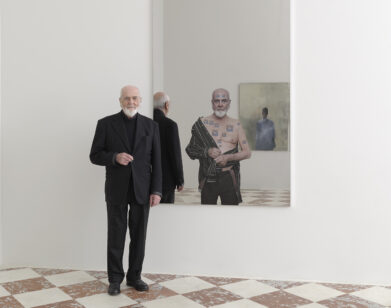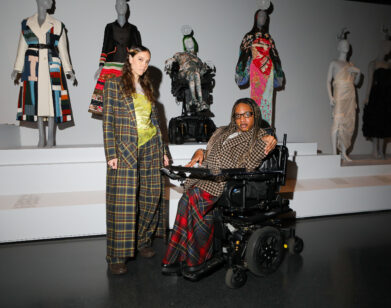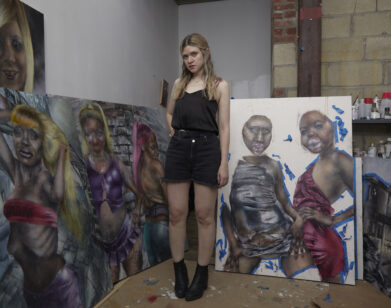art
Dances for the Death of Anthropology: Maya Stovall’s “Liquor Store Theatre”

Photo by María José Govea. Courtesy of the artist.
“I’m obsessed with simplicity,” the Detroit-born artist and anthropologist Maya Stovall says, speaking of her practice. Her most recent show, LUX, at White Columns in New York, featured Stovall’s “1526 (NASDAQ: FAANG)” series, in which each year is written out in white neon denoting a significant event in the histories of Black people in America. “1526″ for the first successful rebellion of enslaved people in North American history; “2014” for the Detroit Water Crisis.
The years represented function as data points, expressing the realities of racial oppression, struggle, erasure, and claim staking in the United States. What’s past is more than prologue, the works insist. History reverberates in the present; the effects of white supremacy are felt by Black Americans each day with the immediacy of a neon sign glowing in a store window.
Such windows are found at liquor stores across Detroit’s McDougall-Hunt neighborhood, where the artist lived and worked from 2012 and 2018. These liquor stores form the focus of Stovall’s “Liquor Store Theatre” project, a six year-long artistic and ethnographic study of McDougall-Hunt, which unfolds across a series of thirty videos, featured in the 2017 Whitney Biennial, and book published this winter by Duke University Press.
For each video, Stovall staged an unannounced, choreographed dance performance at the site of a local liquor store, and after dancing, interviewed members of her impromptu audience about their views on the neighborhood, their city, and its future. Scenes of these interviews and performances are cut together in the videos, the voices of Stovall and residents mingling with the project’s ambient techno score, Detroit electronica composed by artist Todd Stovall. Stovall’s original music compositions form the soundtrack across the project’s six volumes. The interviews reflect an intense awareness of Detroit’s binary representation in American media: either a dead metropolis, or a city on the comeback. In “Liquor Store Theatre,” Detroiters return the nation’s speculative gaze, contradicting assumptions and dispelling popular myths.
Stovall’s new book on the project reflects on all that happened off-camera, delving deeply into the work’s theoretical and historical background, as well as the close relationships the artist developed with her key subjects over time. As in Stovall’s neon works, a simple premise—in this case, a dance at a liquor store—opens the door for critical sociopolitical analysis. Today, Stovall, an assistant professor at Cal Poly Pomona, splits her time between Detroit, where she’s represented by Reyes|Finn, and L.A. County. On the occasion of her book’s publication, Interview called up Stovall in L.A. to talk about the project and her practice.
———
ELLA HUZENIS: You’re a fourth-generation Detroiter. What was your experience like growing up in the city, and how did your life there orient your research on Detroit in “Liquor Store Theatre?”
MAYA STOVALL: Yeah, my family’s been in Detroit for a very long time, since the mid-19th century. I grew up in a neighborhood called Woodbridge. It’s a hot neighborhood now. My parents bought a house there when I was a baby. I’m thinking of this image that’s reeling through my mind of riding my bike as a super little girl. I had just learned how to ride a bike. I was five, seven, something like that, and I could only ride to the end of the block, which amounted to 100 meters, if that. And so, I would ride to this corner, turn back, ride to the corner, and turn back. And there was always this white man standing on the corner, across the street in front of this apartment building. It’s a hot apartment building now, but then it was a pre-gut rehab, so it was in shambles.
And so, I was riding my little pink bike with sparkly pink streamers, and I would get to the corner, turn back, get to the corner, turn back. And this White man was always watching me. I remember wondering, “What is this man doing in front of this house all the time?” The house was probably a crack house. The neighborhood, at that time, was full of professional families, artists, multi-ethnic families. Majority Black, but highly multi-ethnic as well. Lots of crack around. Lots of cocaine. I think I was aware of it at that point. I knew that something was going on in that apartment building. I was always told, “Don’t cross the street,” and I never did. I really lived a lot of the different phases of development in Detroit, and really was steeped in it from hearing stories of prior generations’ experiences. Everything that you could think of, I kind of have touched on it with family, or have heard stories. That’s a big part of my interest in cities broadly, and my obsession with Detroit. You think about the first time you sliced an orange open and smelled the citrus—smelled the pineyness and the woodsiness—and just sort of let that take you over. The freshness and the oldness at the same time. That kind of feeling is Detroit, and I’m interested in that feeling.
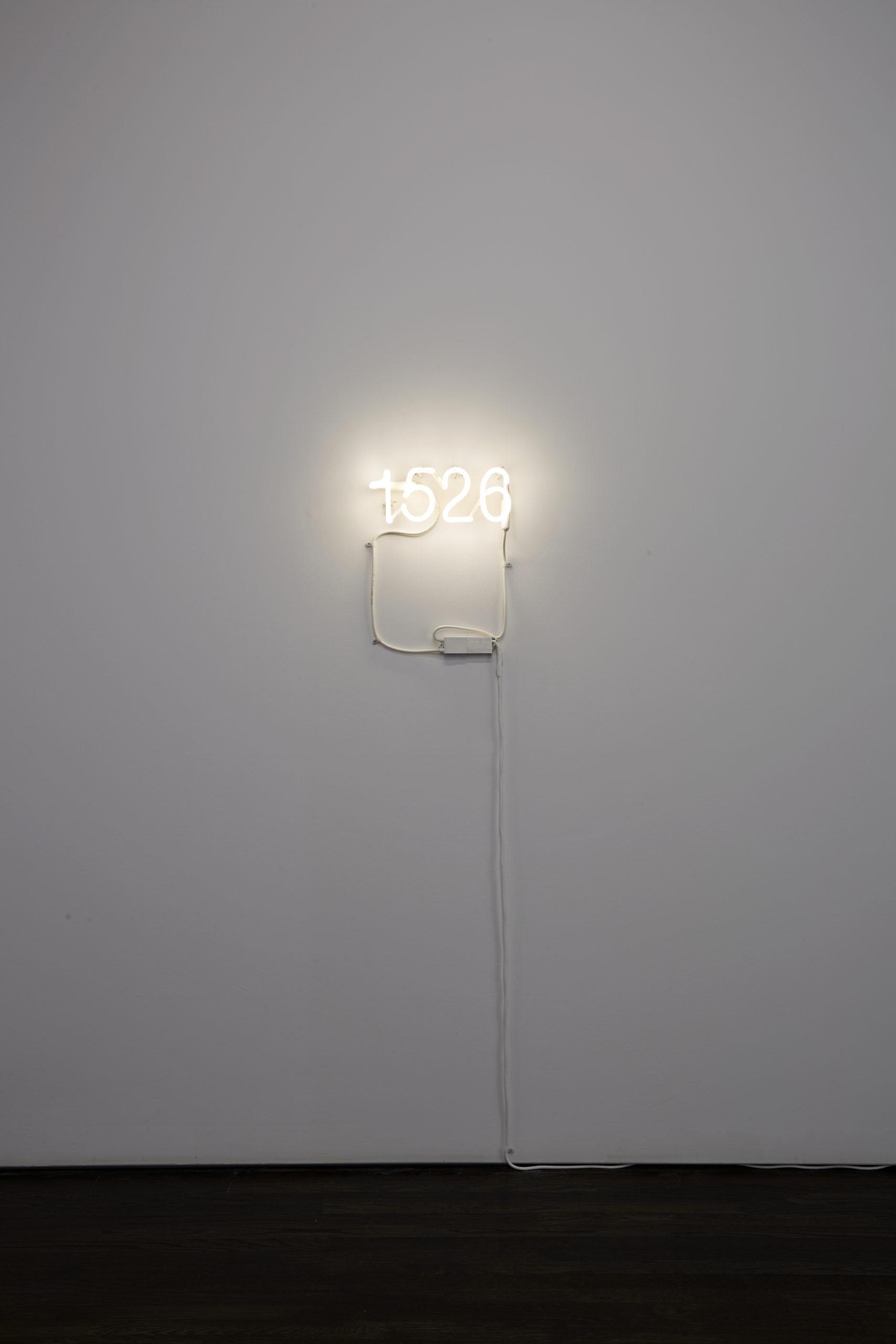
Maya Stovall, “1526 (1526 NASDAQ: FAANG), no. 1,” 2019. Photo by Marc Tatti. Courtesy of the artist and White Columns.
HUZENIS: How did your focus turn to McDougall-Hunt?
STOVALL: I was really looking around at that point for studio spaces and a space that was possible to live and work in one space. I wanted a big space. Detroit has a lot of post-industrial or post-capital spaces, so I ended up finding this bank in McDougall-Hunt that was massive and formerly abandoned. It was a former Comerica Bank, and so the space was just perfect. McDougall-Hunt is a really storied bridge to cultural history. I became really intrigued by the neighborhood. I think it’s a neighborhood where in the post-bankruptcy moment, a lot of contradictions are visible and visceral, so the landscape of the neighborhood itself demands attention. I guess I was just really tired of reading badly done journalism and unwittingly taking part in badly done journalism about Detroit, and about what’s happening—poor, impoverished representations of the city. So, in terms of my anthropological interest, I was interested in doing a project that would demand consideration of some of these problems that I saw or observed.
HUZENIS: And when you moved to the neighborhood, did the presence of these liquor stores immediately capture your attention as a frame for these contradictions?
STOVALL: Yeah. There’s this little snack that sort of crystallizes some of this. It’s called Rap Snacks. Imagine this cartoon-anime sketch of Vanilla Ice or Cardi B on a pack of chips or something, but they’re knock-offs of Cheetos or Lays or whatever. It’s like the super-hydrogenated version of the already-hydrogenated. They’re bright colors and the cheapest possible gauge of the foil packaging. And it’s sold for 99 cents.
I’ve never seen them anywhere else in the world other than in liquor stores. And this sort of product quality is consistent across the majority of the products—inferior quality products at inflated prices. The stores, on average, gross around $400,000 per year in a neighborhood where the median income is about $14-15,000 per year. The store owners are 100 percent Middle-Eastern Americans, and the neighborhood is well over 90 percent African-American. None of the store owners live in the neighborhood.
HUZENIS: Within the book, you talk about how you intend to use the liquor store performances as an “ethnographic prompt” for addressing some of these issues. By performing, making yourself vulnerable to your audience, “your subjects,” you invite the people you’re studying to be candid and vulnerable in their conversations with you. Tell me about why you used this approach, and how it relates to the broader goals of the “Liquor Store Theatre” project?
STOVALL: In a way, “Liquor Store Theatre” is a call for the end of anthropology, because anthropology is a viper and a demon—just like philosophy, and biological science, and history, and medicine, and actually, every discipline that can be organized and codified into a field. I think that today, if anthropologists want to study some group, they should really study why they want to study that group. I think this is true for every discipline—if it’s going to continue, it has to die.
I’m interested in changing the axis of access and spectacle in anthropology—changing and actually destroying the idea of “engagement” or the idea of “participation,” problematic ideas that need to be remade in order to actually have any meaning. I like the idea of reversing the spectacle. The dance is just the start. This is just the initial point of departure. Staging a performance on the sidewalk outside of a store with this abstract, contemporary choreography, wearing shades with a bunch of striking-looking people. That’s just the surface.
It’s a “fuck you” to the idea of the pop-up [performance] because it just happens quietly for the people who are there at the moment, and then people are able to self-select. People who are interested in what’s happening will come up to me and ask what’s happening, and we eventually can participate in a conversation and be in the videos if they want.
I wanted to bring something on a very simple level. I’m obsessed with simplicity. I wanted to bring something to the project. I wanted to place myself at risk in the project, and I think that this is something that all anthropologists who are doing this kind of work should consider.
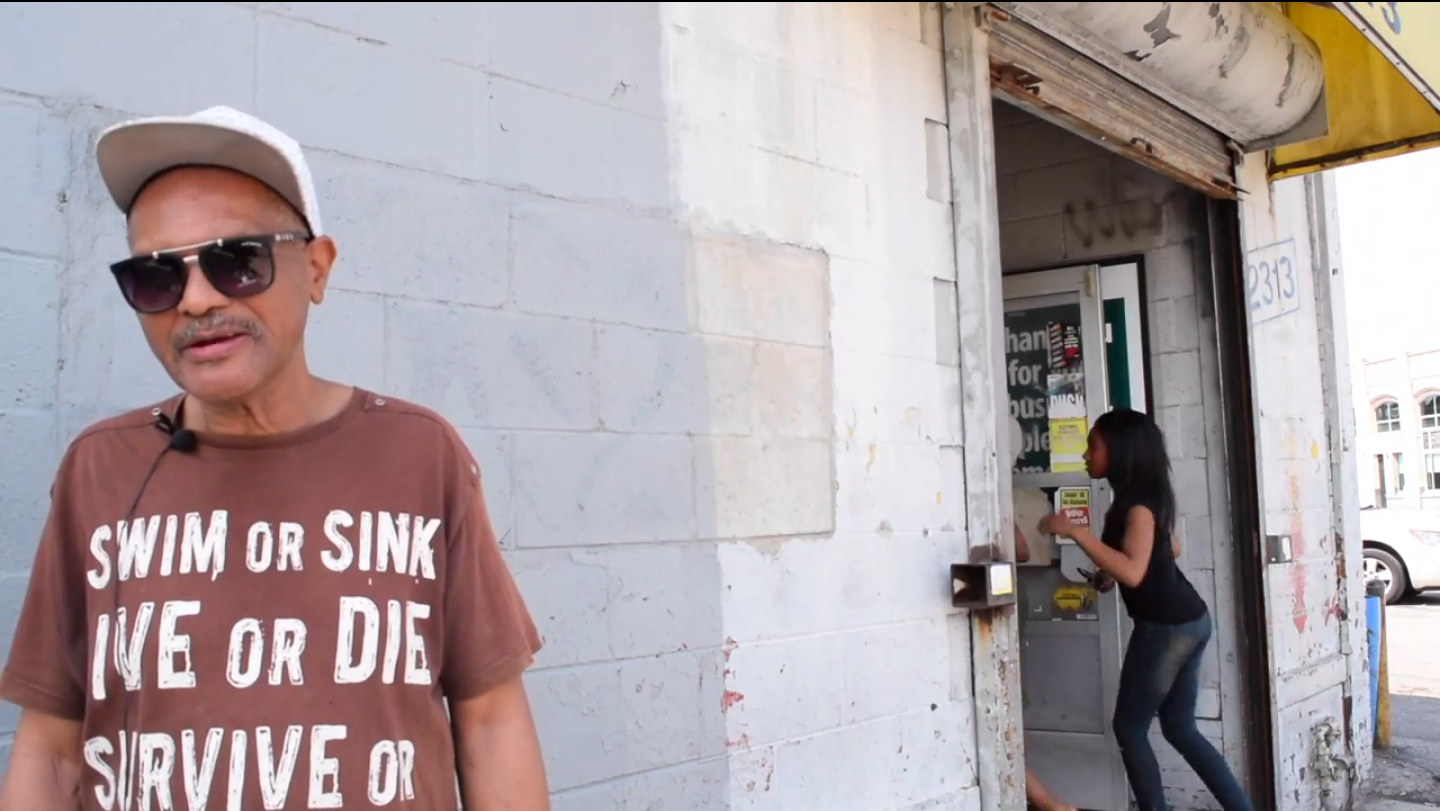
Maya Stovall, “Liquor Store Theatre, vol. 4, no. 6,” 2017, video still. Courtesy of the artist and Reyes | Finn.
HUZENIS: Tell me about the kinds of exchanges and encounters that became most interesting to you over your six years of research? How did your thinking about your research evolve over time?
STOVALL: The videos, for me, are really paintings. Paintings about Detroit. Paintings about city life. Paintings of the seen and the unseen, and paintings, really, that have this materiality that everyone craves. It’s what I crave is this materiality where the paint is so dense and so layered and so sculptural that you really can’t tell the surface from the edges. Everything is interwoven and interconnected.
Moments over the years form these layers and this materiality that becomes empirical. Becomes empirical, so “data.” In things that I make—whether it’s video or neon—really, what I’m interested in is this sort of materiality that involves data and information, and this abstractionism that can take you to the smell of citrus or can take you to the experience of orange. These moments are really the moments that reveal limitations in my own thinking or practice, and the moments that, unfortunately, reveal the breakdown in the society where we live, the taken-for-granted injustice that we think is normal or that we have been taught is the free market, when actually, it’s a system and a structure. There have been times when I’ve interviewed a store manager and they’re waxing on about “Detroit is on the comeback,” but I talk with a resident who has lived in the neighborhood for 45 years and they say, “There aren’t any jobs. There’s no economic opportunity.” But the store owner is able to earn a good living for their family in that same neighborhood where they don’t live. Is this the free market? It’s actually geographic apartheid. It’s actually a breakdown in the free market. It’s actually a structure of a market where people who have lived in the city for decades and decades can’t access credit and real estate markets, and the multicultural lie that we’ve been fed allows anti-Black policy to benefit generations of people. I’m always interested in thinking, “What would somebody who actually believes that this system makes any sense think about this?”
HUZENIS: Several times in your book, you refer to this term, used by the anthropologist Laurence Ralph—“history-as-lived” (as opposed to “history-as-registered”). Are your informants’ personal experiences and accounts of history what you have in mind when you use that term? Are their accounts a way of thinking about “history-as-lived”?
STOVALL: That is part of what I mean in that term. Part of it, too, is that we often think, “Well, things in the contemporary just emerge as we emerge,” but really, it’s a reproduction of history in many ways. Over time, change happens, which can lead to transformation that dissipates for hundreds and hundreds of years. The reality of what’s around us is actually shaped by what’s gone. But then, “history as lived” is also experience. It’s people’s analysis of history at that time in history. That’s a facet of history that we often don’t experience. Arguably, anthropology, as a discipline, can fill in some of those gaps, but part of that depends on the questions that we’re asking. And if we don’t think that there are any problems with our questions, we’ll never find those gaps. Looking at the history of anthropology, there are many instances in which the tragic flaw was the inability to ask, “What is the problem with this question?” How is this question doomed from the start? And how might that change the answer, and maybe change the trajectory of history?

Maya Stovall, “Liquor Store Theatre, vol. 4, no. 7,” 2017, video still. Courtesy of the artist and Reyes | Finn.


